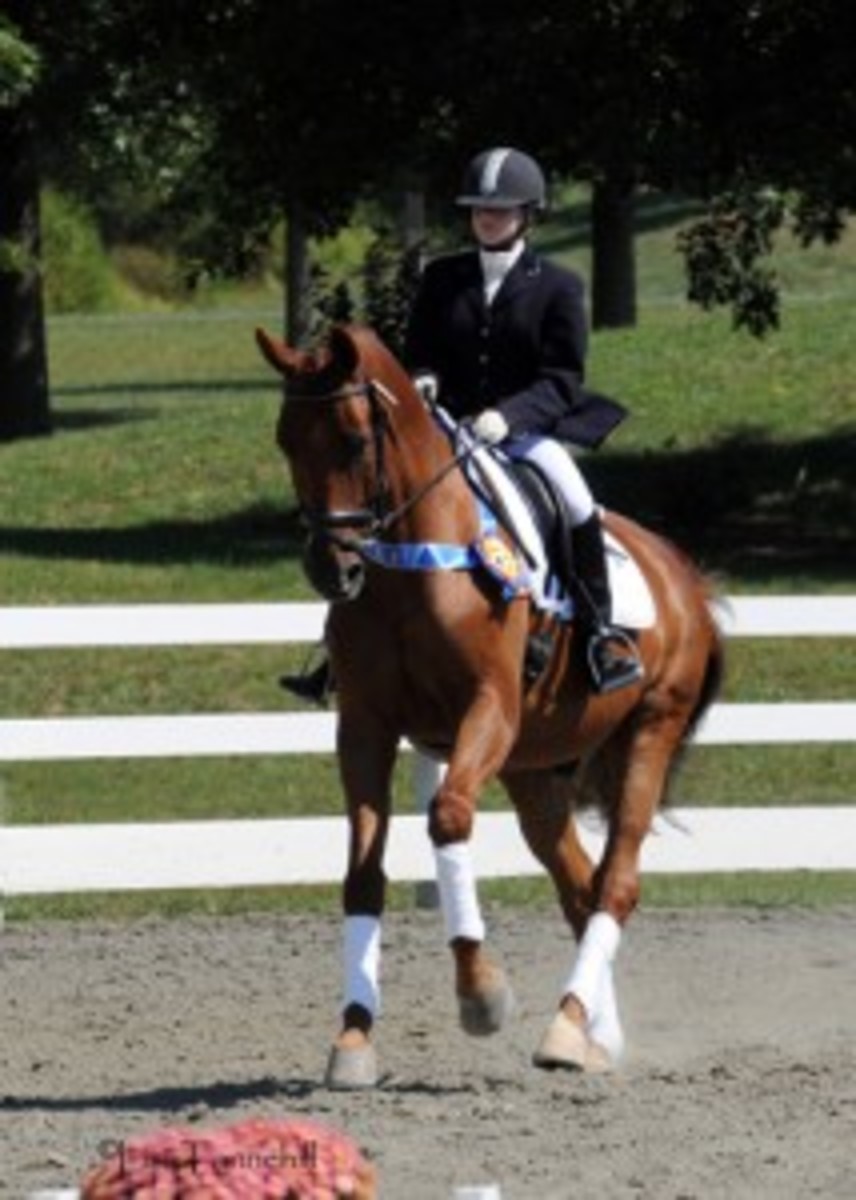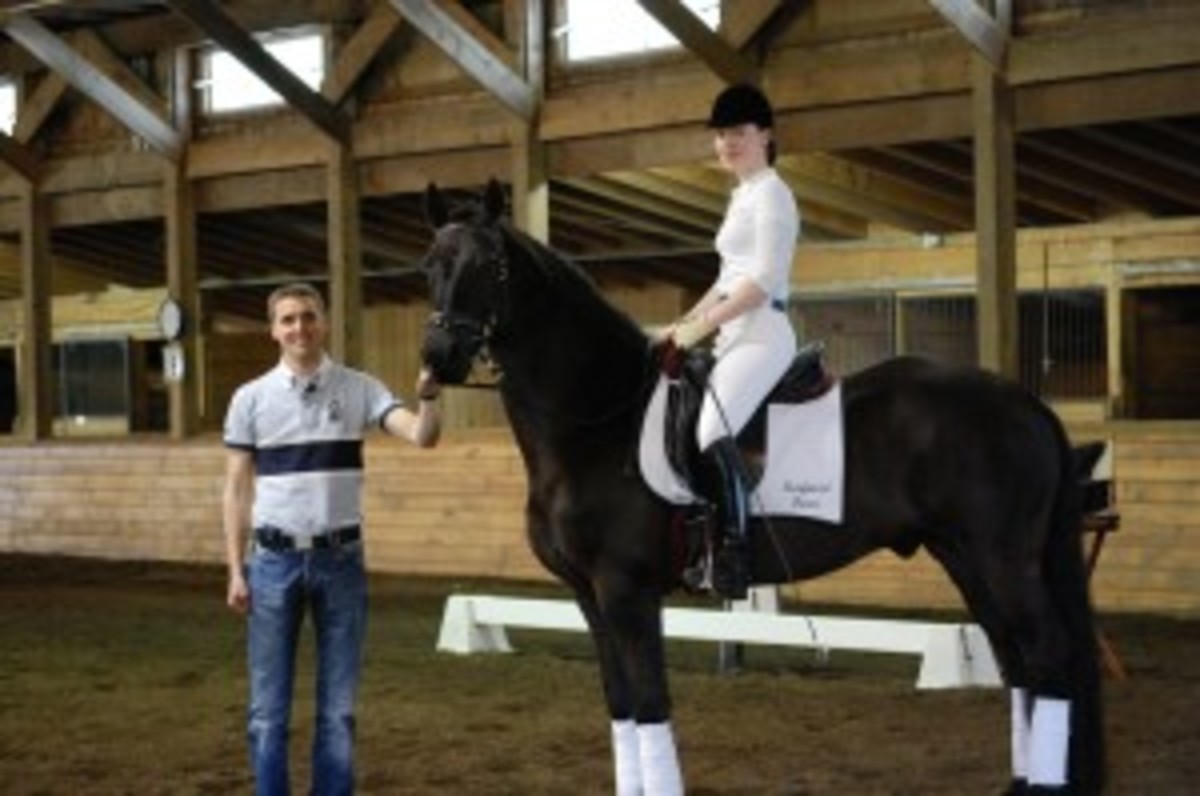If anyone can talk about the ups and downs of being a dressage working student, it’s Melissa Pribic of Somerset, New Jersey. Melissa has been a dressage working student for six different dressage trainers, whose collective experiences include U.S. Dressage Federation medals bronze through gold, Young Rider Championships, U. S. Equestrian Team, Para WEG, as well as numerous regional and national awards.

“Dressage working student positions vary greatly depending on who you work for,” says Melissa. “That being said, it is important to understand what it is you are looking to gain from the experience. You must also know your trainers expectations. Sadly, the most common negative issue I have experienced (and have heard from others) is not being?compensated for the work you do in the manner agreed upon.”
Most dressage working students work in a bartering system?you do A, B and C, and in return you’ll receive one free lesson. Unfortunately, not every trainer holds up his or her end of the bargain. “I worked for a trainer who continuously ran out of time at the end of the day and would have to “put off” my lesson. The end result often being that I never got the lesson.?Another experience I had involved a trainer wishing to ride and show my horse. I was in college and unable to afford training on my young gelding and was repeatedly told what a great training opportunity this was for him and myself. After only four months my horse was injured and I was left with the vet bills. Again I rarely received the training I was promised and my horse was never trained above the level I had been previously competing him.?The lesson??If it seems too good to be true it probably is. If you feel like your being taken advantage of it’s important to try and discuss the situation.”
Hopefully questions and observations prior to accepting a working student position will help alleviate problems before they happen. “Take the time to realize what it is you want in this industry,” says Melissa. “When you understand your goals then you can find a way to make them happen. I have a mental checklist based on my needs that I go through when looking at a working student position.?Questions I include are: What is the person’s reputation? What are their?achievements?(their students/horses)? Do they have a training philosophy? How do they keep themselves educated in our sport? Why do they need a working student? Requirements??I also observe their students and horses, as well as how the trainer interacts with them. Shadowing a current student and/or doing a trial period are also important for making sure it will be a good fit for both parties.”
In a perfect world, your research would lead to the best situation for you. Unfortunately, this isn’t the case, and despite your best efforts, bad situations can still happen. “It’s important to try and discuss your concerns with the person,” says Melissa. “Sometimes that isn’t possible, in these cases it might be best to cut your losses. Never get emotional, it’s important you maintain your integrity. Be grateful for the education they have given, even bad times are learning experiences. Thank them for their time and explain that it may be time for you to move on. Try and give them a limited amount of time you are willing to continue to help while they look for a replacement. It is never easy and can be complicated further if housing or board are being provided. In these cases make sure you have plans in place before you announce your leaving, so you don’t find yourself in a worse?scenario.”
Becoming a working student can be a very rewarding experience. But knowing what you want from the position and finding the right program is key. “I have been given great?opportunities because of my trainers interests in my education,” says Melissa. “The best people to work for are trainers who want to share their knowledge, they love this industry and want to encourage you. The first trainer I worked for shared not only her horse knowledge but her?management style as well. Another trainer was heading to vet school and cared enough to involve me in the horses’ medical appointments so I could learn that aspect of horse care. I worked with a trainer recently who really cared about my riding and let me ride everything from babies to a Third Level Fjord, asking about my horse and working specifically on exercises I could try with him. My current trainer is very focused on critical thinking, and teaching me that all horses are individuals who may not respond to the same technique. She has allowed me to expand my education from watching clinics with top riders to introducing me to equestrian politics. Thanks to these wonderful individuals my dream of being a dressage trainer is possible. I hope that others out there are as fortunate.
More Working Student Tales
Vanessa Hubbard began riding at age 10 competing heavily in the hunters and equitation until age 13 when she converted entirely to dressage and became a working student at Carol Seaman’s Outfoxed Farm in Orange County, New York (see “The Working Student Life ? Is It For You?” in the May issue of Dressage Today).
“From the beginning, I learned the basic horsemanship and skills needed to become a serious rider,” says Hubbard. “I learned how to ride green horses as well as how to perfect my skills on FEI schoolmasters. I have also had the privilege of working with wonderful clinicians such as Gunnar Ostergaard on a regular basis. Showing at the regional championships, Dressage at Devon and the Northeast Junior Young Rider championships were all goals I could not have achieved without the motivation and guidance of Carol.”

Currently, Hubbard is pursuing a PhD in Immunology at Albert Einstein College of Medicine, while working part time as a working student for Seaman riding various sale horses and schoolmasters. For the last two years, she has helped train the 8-year-old Outfoxed Farm Friesian gelding, Venice, from being a driving horse to earning several blue ribbons at Training Level in his first shows.
The ability to create a program that nurtures a young rider’s passion is what helps reveal the next great generation of dressage riders. In turn, it gives trainers an opportunity to find students who truly want to work and learn the sport. “I created the program because I had students interested in spending time experiencing farm life and learning from me,” says Seaman. “It seemed like the logical thing to do and I adore working with young motivated riders. It’s hard to find experienced workers, so I would rather train them myself. I have had students go on to start their own horse business after their experience with me.”
For Lauren Donohue, a student of Seamans, the working student program allowed her to pursue a dream that ultimately changed her life. “When I was a kid, I rode with Carol once a week for two years but didn’t have the money or transportation to pursue riding,” says Donohue. “I gave it up in high school, but could never get the image of Carol riding her horse Easy out of my head. When I turned 19 I went to visit Outfoxed Farm. I didn’t have enough money for lessons, but I’ll never forget when Carol said to me: If you love this, you should pursue it. And so I rolled up my sleeves and started as her working student. Having very little knowledge about horses, she gave me the opportunity to work hard and learn it all, and I soaked it up like a sponge.”
Today Donohue events and rides Third Level dressage with Olympic judge Marilyn Payne, is the face of Dublin Equestrian apparel and has been a frequent demonstration rider for the USDF judging program. “My whole life has changed because of my passion for horses, and Carol was the gateway to my future.”











